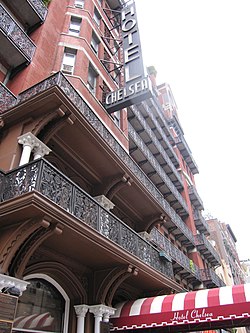Upon meeting Robert Mapplethorpe, Smith’s world is transformed as she meets her true soul mate who she could endure the hardships of the big city with. The fact that they relied greatly on each other and trusted each other in the harshest of times shows that true companionship is not material, but rather requires an emotional contact.
Together, the couple experiments (both positively and negatively) with the growing opportunities of New York. Smith finds opportunity in the artistic quality of New York, meeting new people and traversing its museums. Mapplethorpe contrasts her experiences by testing drugs, his sexuality and the underbelly of New York. Even though we may not fully agree with their preferences for experimentation, it was here in New York that the couple was able to truly find their identity and fully grasp it.
I think that at its base, Just Kids represents the idea of finding your identity in this life and exploring the options the world has to offer. Patti Smith may not have been successful if she had stayed home with her family and became a struggling waitress, but her strive to push forward in life allowed her to succeed. Smith and Mapplethorpe represent the rebellious subculture that America created, which gave birth to many creations such as new forms of art, expression and identity. By detailing her struggle, Smith truly shows that any rational dream can be achieved with the right amount of work and perseverance. Reading her early experiences, one would not think she would become a successful singer, but more likely a faltering artist or writer. In recounting her early life, she gives hope to the younger generations who read her book, and defines the idea of an American Dream–that people can do whatever they want when they come to America and succeed in doing so.
-Joseph Valerio



